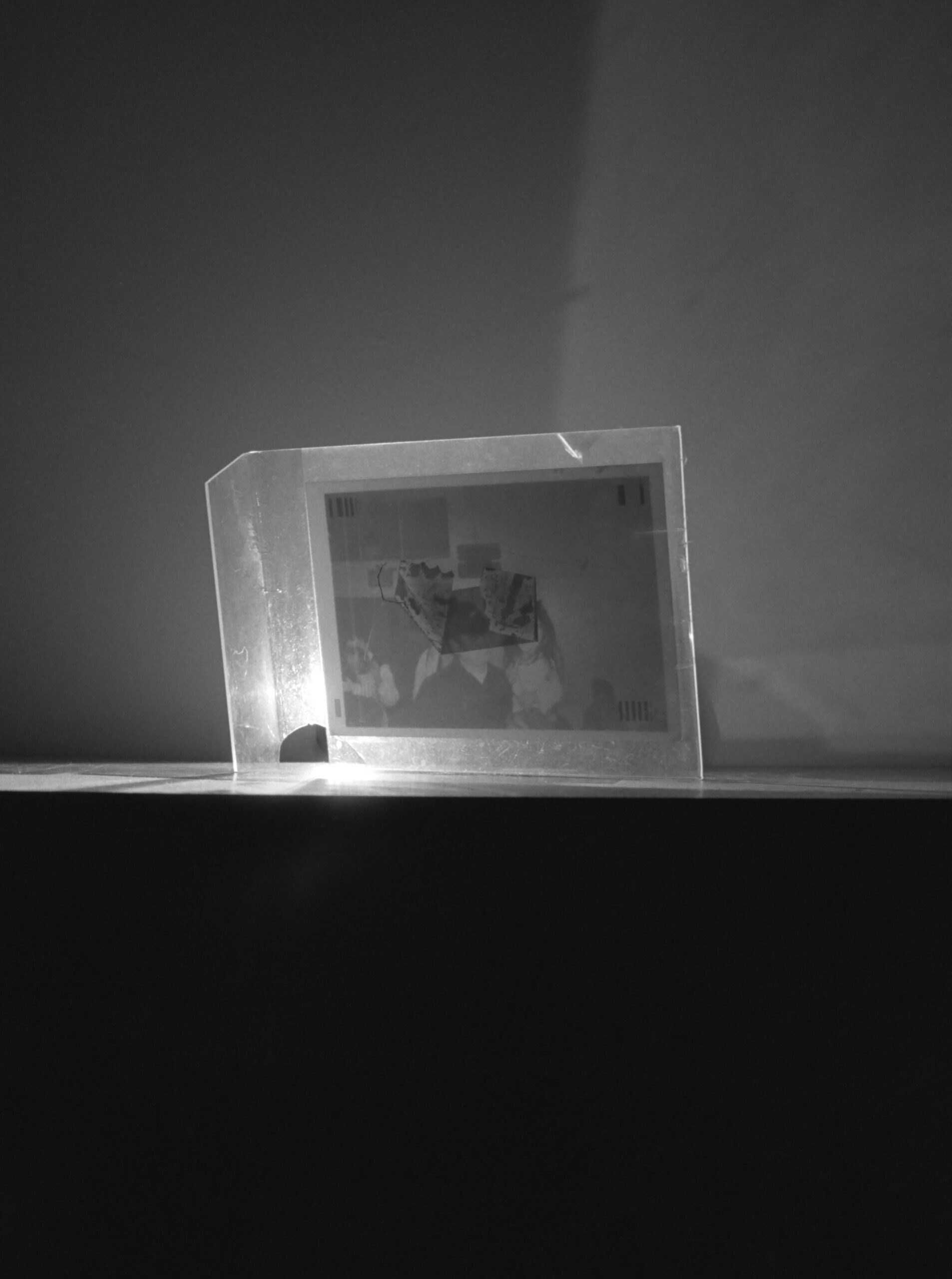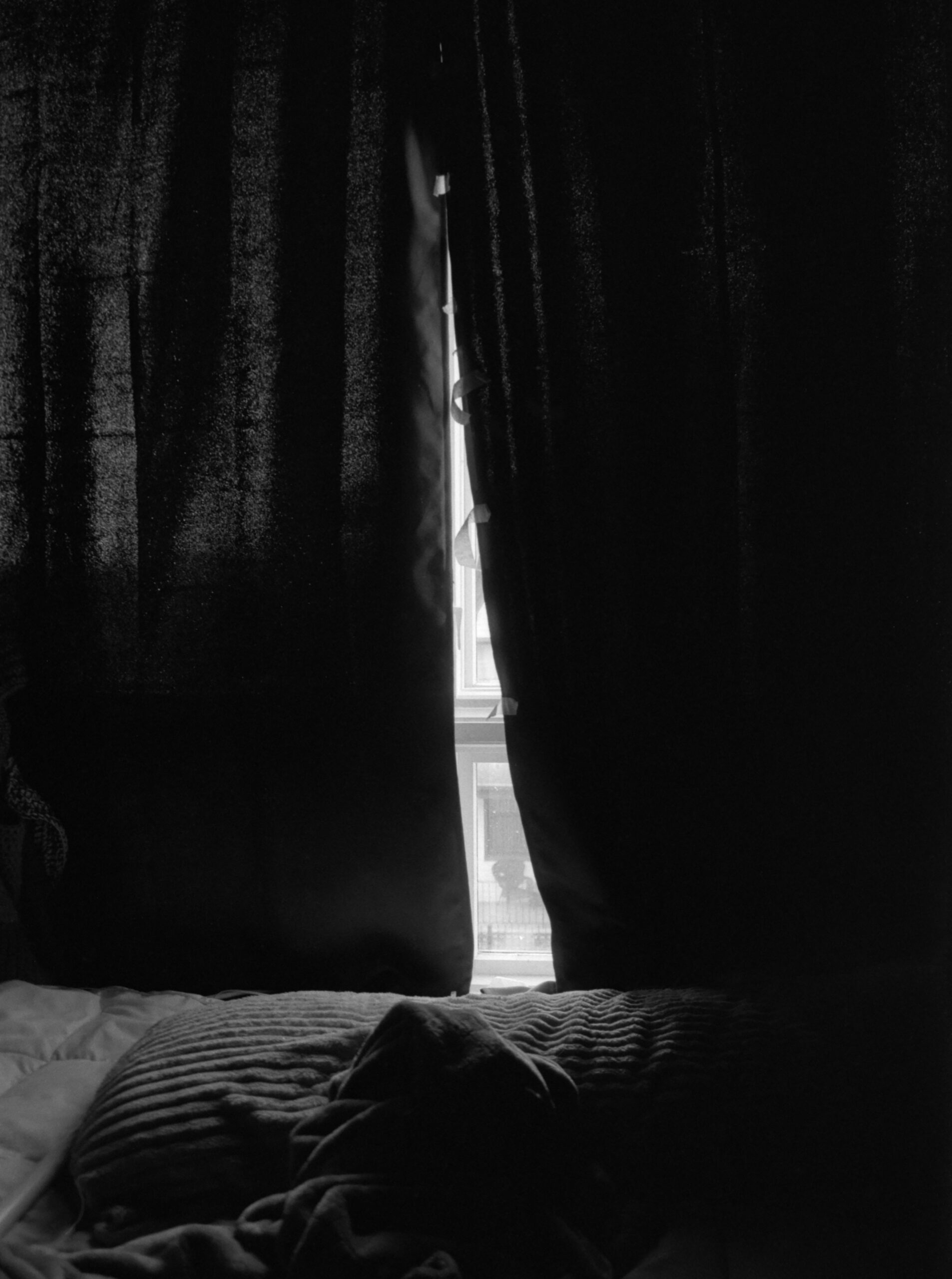Every photo in Kaytlin Bronson’s 2023 senior showcase at Pratt, titled Whittle, was made within Bronson’s Brooklyn home, among “a cocoon of familiar objects” that could sometimes comfort, sometimes overwhelm. Isolating specific elements of this personal environment—a cracked acrylic photo frame holding a cherished family photo, parted blackout curtains revealing a sliver of city block outside and, inside, the velvety texture of a blanket—within the space they occupy became a chance to consider deeper questions of being and belonging, the essence of home.
In this Q&A with Prattfolio, Bronson sheds light on the process and discoveries behind the work.
Tell us about how you began Whittle. What did the work reveal to you?
For a long time, I developed photographs that were very abstract, to display my emotions and feelings, what I felt was going on in my psyche. For one photograph, I decided to take a step back—literally. I was photographing an object on my desk, something that I’d made, and I was very close to it, to focus on the details. On the spot, I decided to step really far back to capture the entire object. The end image was of an object that I made, that I felt represented my insides, sitting on top of my desk in my room.
Seeing this photograph made me feel like a part of my internal being was spilling out onto my desk. It made me realize that I take up space in the tangible world, during a period of time when I felt like I only existed within myself. Eventually, this photograph would be the inspiration for the rest of the work for Whittle.
I hope the viewer takes away this feeling of discovering something that is finally being uncovered after being lost and hidden for a very long time.
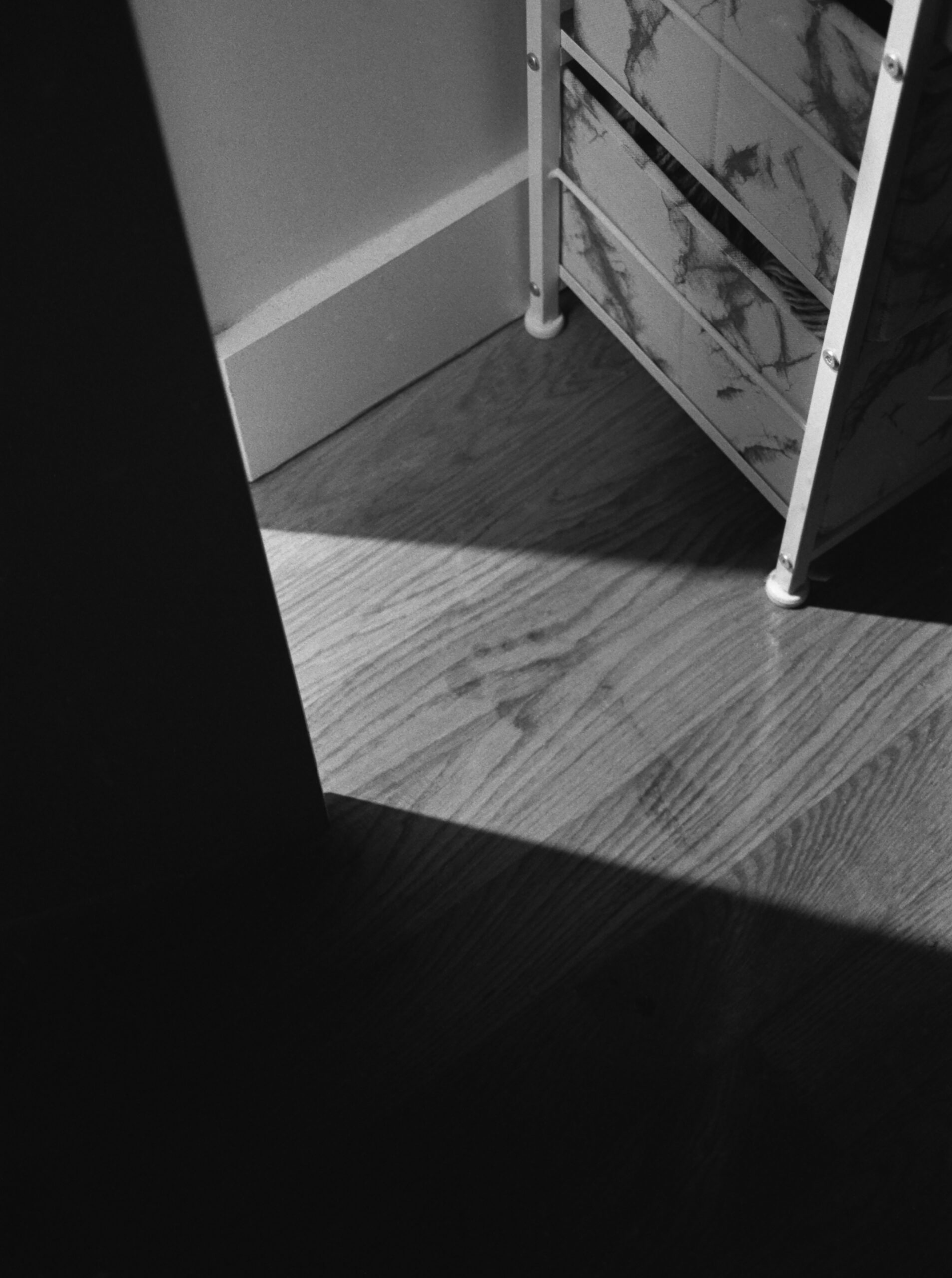
What is the significance of home for you in your work?
All of the photographs for Whittle were taken within my home in Brooklyn. My bedroom has always been a cocoon of familiar objects that comfort me and that have traveled with me since childhood. But I’ve also recognized that my space can become a cluttered cave that can make me feel trapped and isolated. The objects I am photographing I have either created or found within my own built environment. They represent me and parts of my body but also act as evidence of my existence within a space. I’ve always spent a significant amount of time within my room, so naturally it would become an outward projection of my ideas and thoughts.
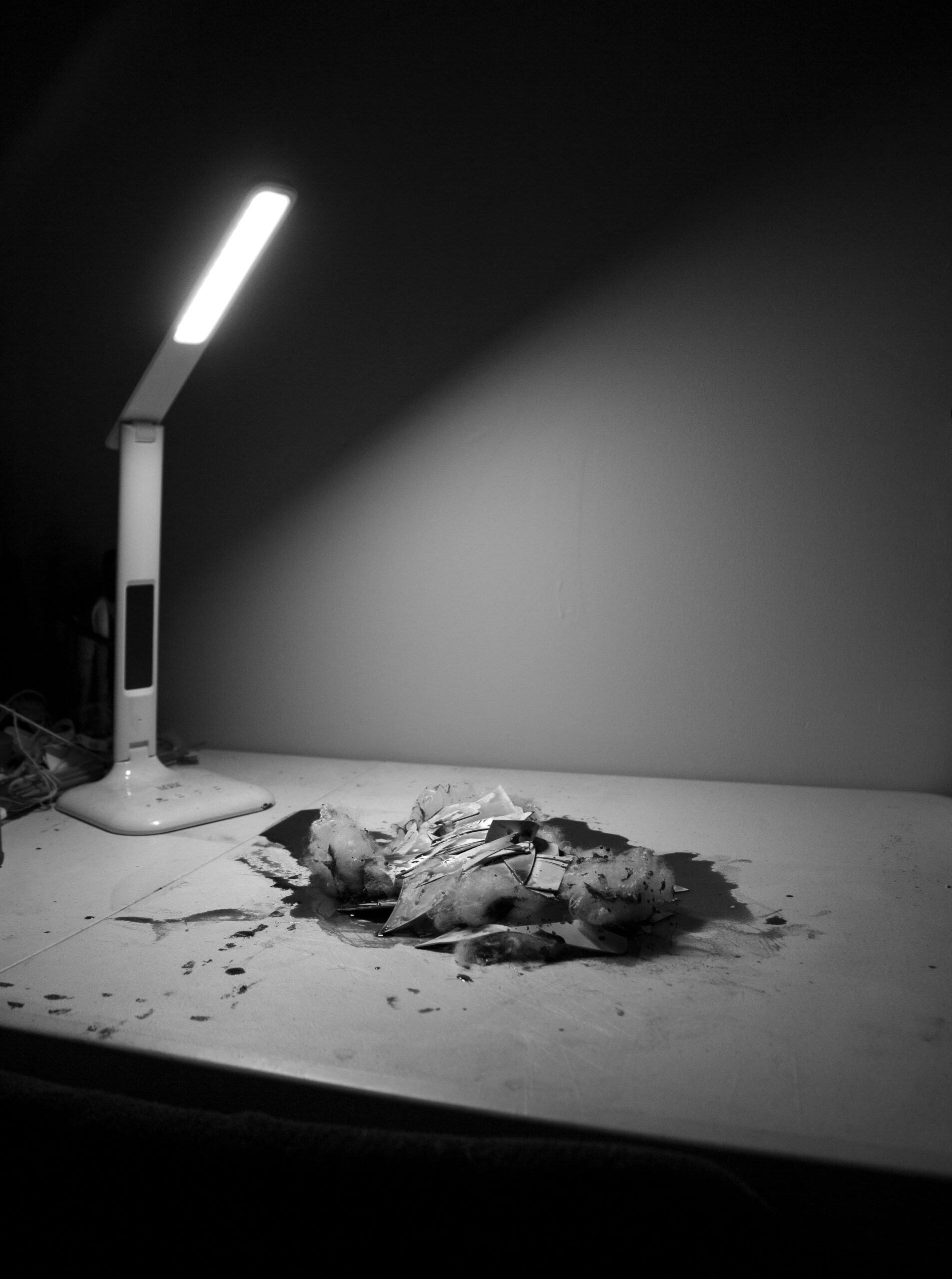
What are some sensations or ideas that define “home”—and how do those feelings or concepts relate to the work you showcased in Whittle?
Whenever I envision home, I think about the items that are there, especially the ones that I’ve had since childhood. I can become very sentimental when it comes to ordinary objects that remind me of a certain memory or event. My work Whittle is a culmination of a year of psychoanalytic practice asking the question, how have I become the person I am today? This work made me take some time to digest everything within my space. It made me question why I cling to certain items and how those items can reflect parts of myself back to me.
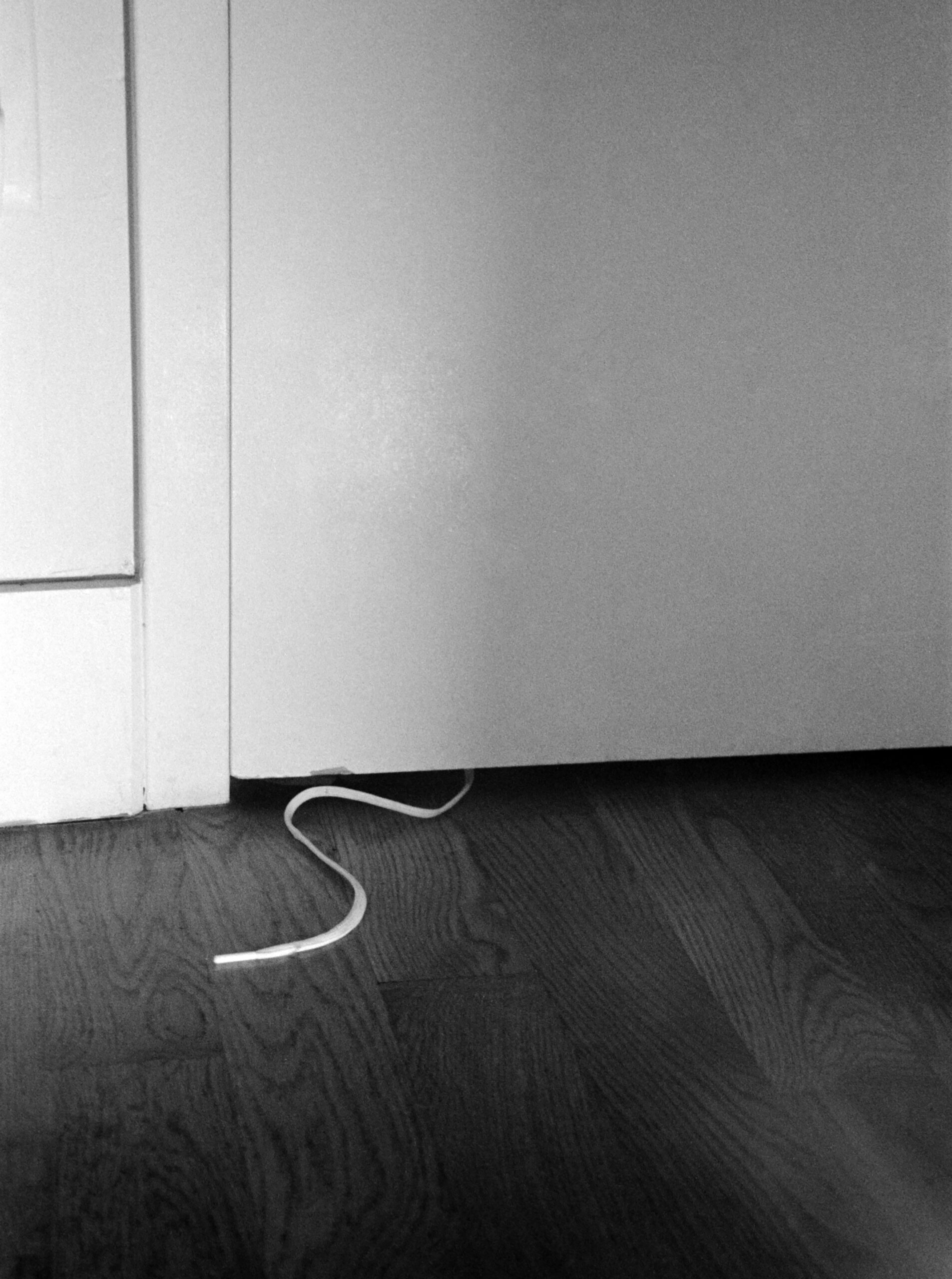
How have your perceptions of home changed over time?
From a young age, home to me was wherever my mother was. After losing my father, I grew very attached to her and was scared to leave home or her for long periods of time. I also found comfort and home in familiar objects that I would see on a daily basis; they gave me a sense of permanence and attachment.
As I grew older, I learned that where I was couldn’t be home forever. I needed to venture out and also find a community that would allow me to express myself freely. Now I know that home can be wherever I want it to be, as long as I can still find that feeling of comfort and safety among the people and objects I surround myself with.
